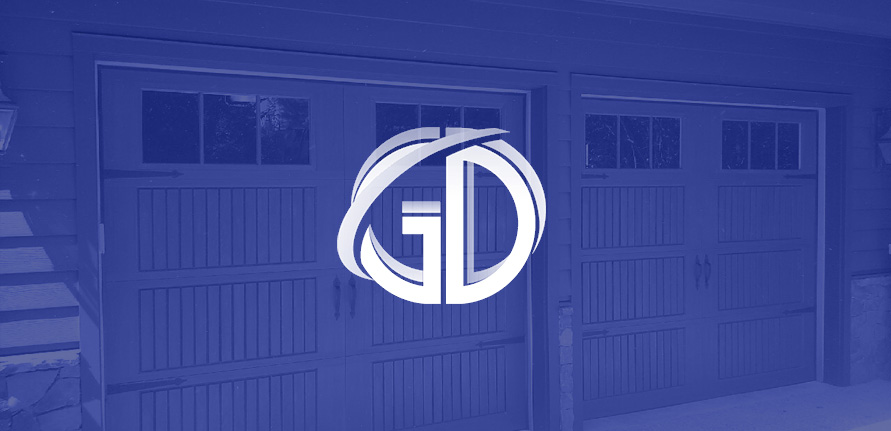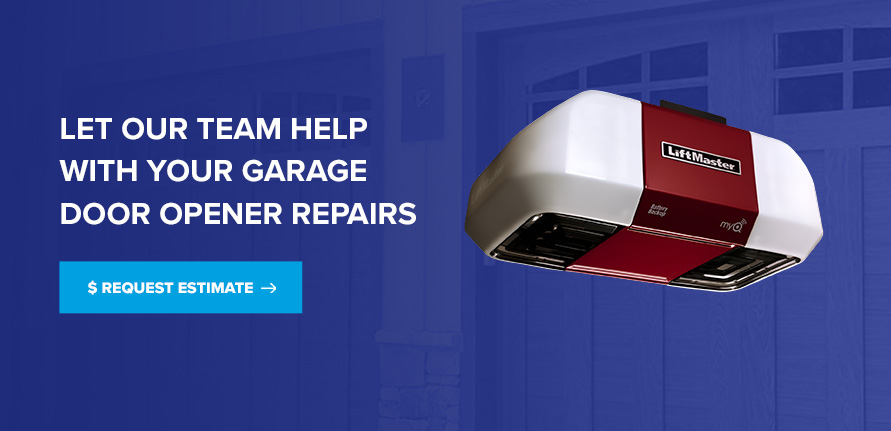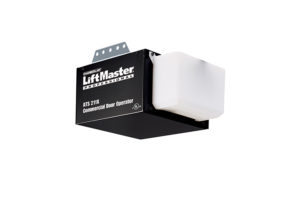Single vs Double Garage Door
Single vs. Double Garage Door: Simplifying Your Garage Door Decision
Selecting a garage door, whether for a new build or renovation, is an important decision. Garage doors do more than improve the curb appeal of your home. They also enhance functionality, security and energy efficiency. Let’s explore the differences, pros and cons between single and double garage doors to help you make an informed decision.
Comparing Single vs. Double Garage Doors
The differences between double and single garage doors include:
- Vehicle accommodation: A single door caters to one vehicle. Deep single garages may accommodate two cars parked behind each other. Double garage doors fit two vehicles side-by-side.
- Size: While garage doors vary, most single doors are around 8 to 9 feet wide by 7 feet tall. A standard two-car garage door is 16 feet wide by 7 feet tall.
- Cost: Due to their smaller size, these doors may cost less to buy and install than double doors.
- Space: Single garage doors take up less property and driveway space.
Best for Saving Space: Single Garage Doors
A single garage door could be the perfect choice if you have one car. Single doors take up less space, making them ideal for smaller properties. The lower upfront and installation costs may appeal to homeowners on a budget. Easier and faster installation can save on labor costs. Since single doors are lightweight, they can be easier to operate if the power goes out.
A smaller door may not suit every home. Single garage doors accommodate one vehicle, which can be problematic for multiple cars. They may not fit larger trucks, SUVs or vehicles with roof racks. These garages also have less storage space. Getting items in and out of a single garage can become tricky with a car inside.
Best for Multiple Cars: Double Garage Doors
Double garage doors work well for homes with many or larger vehicles. They make access and maneuvering easier. You could use the extra space for storage, hobbies or a workshop. A double door can also give your home a grand aesthetic that boosts curb appeal.
These garage doors require a wider driveway and a larger property than single doors. Expect to pay more to buy and install larger double doors. Maintenance costs on these doors may also be higher over time.
Another Option: Two Single Garage Doors vs. One Double Garage Door
Have you settled on a two-car garage? If so, you can choose between two single doors or one double door:
- Aesthetics: Two single doors offer a balanced look, while a double door creates symmetry.
- Functionality: Separate doors allow access if one malfunctions.
- Cost: Installing two single doors may be costlier than one double door. You also need two garage door openers.
- Parking ease: A double door eases maneuvering for larger vehicles, while single doors suit smaller cars.
- Insulation: Keeping one single door open at a time can reduce heat loss. A double door leaves a wider opening for rain or cold air to enter.
Find Your Perfect Garage Door With Garage Door Specialists Inc.
Choosing the right garage door depends on your space, needs and budget. Garage Door Specialists Inc. offers a range of Clopay® single and double garage doors. Our team can recommend the best solution and install your new door to the highest standards. Contact us today for a free estimate!
Decoding LiftMaster® Blink Codes
Decoding LiftMaster® Blink Codes

LiftMaster garage door openers use blink codes to communicate error messages. These codes can help you identify issues without needing specialized tools. The pattern usually involves a certain number of blinks and a pause before the sequence repeats.
LiftMaster blinking codes could signal anything from a misaligned safety sensor to a motor issue — so when you notice one, it’s a good idea to figure out the cause as soon as possible.
Remember that each blink code’s meaning varies across different brands and even LiftMaster models. You’ll want to check your opener’s manual for the correct interpretation. You can also give the experts at Garage Door Specialists, Inc. a call. In the meantime, here’s a guide to get you started.
Common LiftMaster Blink Codes and Troubleshooting
Error codes can come in the form of blinking lights or flashing arrows on a LiftMaster opener with dual light and arrow key indicators.
Your LiftMaster could be showing blink codes for numerous reasons. Some are easily fixable with DIY solutions, while others may need professional attention.
One Blink
One blink — or one up arrow and one down arrow flashing on the garage door opener — indicates problems with the wiring or safety sensor. This code could mean the safety sensors weren’t installed or connected properly. The code can also be triggered by cut, disconnected, frayed or pinched wires. Whatever the cause, wiring issues can cause the sensor to lose connection with your opener.
To troubleshoot this LiftMaster blinking light code, you should:
- Assess the sensors and wires.
- Make sure the sensors are installed and the wires are connected to the opener properly.
- Look for any obstructions between the sensors and remove them.
- Inspect the wires on the opener by lightly tugging them.
- Reattach or replace wires if necessary.
Two Blinks
Your garage door opener might show two blinks for short or reversed wires. Alternatively, you could see one up arrow followed by two down arrows flashing. This type of error indicates that the black and white wires are disconnected, damaged or shorted out.
Here’s what you can do to address this code:
- Check the wires at the sensors and opener to see if they are connected properly — white to white and black to black.
- Inspect the wiring for shorts.
- If the wires are shorted, you’ll need to replace them.
Three Blinks

When the wires on your garage door control panel are shorted, it will trigger three blinks — or one up and three down arrow flashes on the opener.
This error code shows up when the wires short-circuit for four seconds or longer. You may notice that the opener still works using your remote controls and keypad, but it won’t react when you press the door control panel.
Consider following these steps to troubleshoot this issue:
- Check if the wires are connected correctly on the opener and panel.
- Look for any wiring shorts or damage.
- Hire a professional if the issue is with the wiring.
Four Blinks
Each garage door is equipped with two sensors on either side. They detect obstructions and reverse when necessary to maintain safe operation.
Four blinks indicate that the photo lens sensors are misaligned or obstructed. The same applies when you see one upward arrow flash and four downward arrow flashes.
To fix this error code, you should:
- Clean the lens.
- Realign the sensors, ensuring they point at each other and the LED light glows steadily.
- Look for and remove obstructions blocking the sensors’ beam.
Five Blinks
A LiftMaster opener blinks five times or flashes one up arrow and five down arrows if it’s not detecting revolutions per minute (RPMs). RPM sensors are designed to stop door operation if there’s a sudden change in speed, preventing entrapment.
When this LiftMaster blinking light code shows up, you can troubleshoot it by:
- Unplugging the opener for five seconds and reapplying power to power cycle it.
- Checking the balance and calling a professional if the opener hums or turns off.
Other Blink Codes
Beyond these common signals, you may also notice other LiftMaster blink codes. These include:
- Six blinks for motor circuit or control board failure.
- Two up and one to five down flashes for load board issues.
- Three up and two down flashes for power loss.
When to Contact Garage Door Specialists, Inc.
Understanding the different codes makes it easy to identify problems and even fix some yourself. In other cases, the repairs may require expertise and tools that only trained technicians can provide.
When you need expert garage opener repair, turn to Garage Door Specialists, Inc. Our professionals can diagnose the problem and provide effective solutions.
Here are a few cases when you should reach out to our team:
- Electrical issues
- Motor problems
- Spring or cable problems
- Persistent issues
- Safety concerns
Let Our Team Help With Your Garage Door Opener Repairs
Garage Door Specialists, Inc. can help you resolve your LiftMaster blinking codes with the necessary solutions and repairs. Contact us today to learn more or request a service.
Why Your Garage Door Light Won’t Work and How to Fix It
Why Your Garage Door Light Won’t Work and How to Fix It
Garage door malfunctions can happen at any time. Even with top-quality garage door opener brands such as LiftMaster, components can occasionally become jammed or fail to operate normally. One common issue homeowners run into is their LiftMaster garage door light not turning off or turning on. While these problems don’t damage your residential garage door system, they can wear down the light’s battery or cause you to stumble in the dark. However, you can easily fix these issues.
Read on to learn some tips for garage door light troubleshooting. For example, if your garage door light won’t turn on or off, try our solutions listed below.
Why Won’t My Garage Door Opener Light Turn Off?
If you are struggling to shut off your garage door light, there is likely a problem with your door’s motion sensor or light timer. More specifically, if your garage door light stays on, it is probably because of one of the following reasons:
- The motion sensors for the garage door are triggering because of movement. These sensors control the light switch’s automatic on-and-off mechanism.
- Your garage door’s light feature is continually being engaged by something in the doorway zone.
- The light panel switch is on.
In rare cases, a faulty logic board may cause your garage door light to malfunction, which would require professional repair service.
Troubleshooting a Garage Door Light Remaining On
Checking to see why your garage door light won’t go off is a simple process since lights staying on usually stem from the lights settings. You can fix this issue of the light staying on by following these troubleshooting steps or watching this video:
Consult the Manual
Consult your LiftMaster garage door manual to ensure you know how to navigate your garage door’s features properly.
Check the Motion Sensor
Test your motion sensor’s light feature. You can turn it off from your control panel by selecting “Menu” > “Light Settings” > “Automatic Light” > “Motion Sensor,” which will disable the feature. Ensure that nothing passively moving in your garage will set the motion sensor off.
Inspect the Remote Control and Wall Switch
Check to see if your light switch is enabled or if the remote control has light on or off options. If you look at the side panel of the garage door, the light switch is there— if it is in the on position, turn it off.
Examine the Garage Door Opener
Inspect the garage door opener. Look specifically for anything that could obstruct the sensor or set it off in some way.
Check for Obstructions
Search the area for any obstructions by the garage door that may affect the sensors.
Look for Electrical Issues
Sometimes, the door’s wiring is the problem. First, reset your light timer to its lowest setting. Disconnect the power from the unit, and the wiring from the opener. Reconnect the power after one and a half minutes, and the lights should come on.
When to Contact a Professional
If you still are having issues after troubleshooting, aren’t comfortable with repairing the logic board wiring yourself or are experiencing any unusual sounds or behavior from your garage door opener, you need to call a professional for garage door service.
Why Won’t My Garage Door Opener Light Turn On?
If your LiftMaster opener light is not working and you are consistently walking into a dark garage, your light may have one of these common causes of failure:
- Burnt-out light bulb
- Faulty light socket or connections
- Issues with the garage door opener
- Problems with the remote control or wall switch
- Electrical or wiring issues
Troubleshooting a Garage Door Opener Light Failure
When your garage door opener light fails, you should go through the following list to start eliminating possible causes and get to the root of the problem:
- Check the light bulb: First, look for telltale signs the lightbulb is blown, like black marks or loose bits inside it.
- Examine the light socket: If the lightbulb is fine, check the light socket for scorch marks or anything out of the ordinary. Remember to be safe — only look, and don’t touch.
- Inspect the garage door opener: Next, look at the opener itself to see if there are any loose connections or damage.
- Test the wall switch and remote control: After inspecting the opener, conduct on/off tests with the wall switch, and check your manual to see if there are light controls on your remote you can test.
- Search for electrical issues on the property: Turn the power off before working with wiring or electricity. Then, inspect wires that run from the opener and any other exposed electrical parts for damage.
Contact Garage Door Specialists, Inc. Today
If you’re having trouble with a LiftMaster garage door light that won’t turn on or shut off, it’s time to contact the professionals at Garage Door Specialists, Inc. You can feel confident that we’ll respond to your issues quickly.
Can You Open Your Garage Door With a Broken Spring?
Can You Open Your Garage Door With a Broken Spring?
Garage door springs are the counterbalancing component that winds and unwinds when the garage door opens and closes. It can be a nuisance if a garage door spring breaks. While it is OK to open your garage door with a broken spring, we recommend contacting the technicians at Garage Door Specialists, Inc. to replace the springs.
Understanding Garage Door Springs
Having a basic understanding of how garage door springs work means you can take the proper precautions when they break. There are two types of springs — torsion and extension. Extension springs stretch from either side to lift the door, while torsion springs sit above and use the tension the springs store while the door is closed as energy to lift it when it opens.
Each type of spring uses its tension to offset the weight of the door, providing a counterbalance to its weight, keeping everything stable. The potential energy that these springs hold is enormous, so it can be a safety hazard when they break.
What Happens When a Garage Door Spring Breaks?
When the spring breaks in your garage door, you will be unable to operate your garage door like usual. The problem might be a broken spring if:
- The garage door opener motor is running, but the door isn’t moving.
- The garage door opener is making grinding or straining noises as it operates.
- You heard the spring break, making a loud pop noise.
- The garage door is off its tracks.
Can You Open a Garage Door With a Broken Spring?
A garage door can still open if the spring is broken, but it takes a bit of manual effort. Trying to open it automatically with the opener could strain the motor or burn it out since the broken spring makes the door heavier to lift.
We recommend not trying to open your garage door if it has a broken spring. Follow these safety tips if you must open the door to get a car out:
- Keep yourself safe by protecting your back, keeping your fingers away from pinch points and ensuring your feet aren’t under the door.
- Lift the door from the center and keep it level as the door goes up.
- Do not push or pull on the garage door panels, as they could bend.
- The garage door will not stay open without support so keep the door level when it’s open.
- Shut the garage door immediately after getting your car out — do not keep it open.
Safety Precautions Before Attempting to Open the Door
When opening a garage door with a broken spring, take the right precautions. Garage doors are heavy and can cause injury if you drop them, so it’s best to have a partner to help you lift them. Make sure the area is clear of pets and children and that there are no possible obstructions or tripping hazards.
The final safety necessity is ensuring you have the correct gear. You will need the following:
- Sturdy footwear
- Safety goggles
- Gloves
How to Open a Garage Door With a Broken Spring
Follow these four steps to safely open your garage door with a broken spring.
Step One: Gather Necessary Tools and Helpers
You will need tools, safety gear and at least one assistant to help you lift the door. For tools, you should have a pry bar, some locking pliers and a ladder.
Step Two: Disengage the Garage Door Opener
Make sure the door is in the down position — then, you’ll need to locate the emergency release cord, which is usually a red cord with a handle that hangs from the trolley. Pull this cord, and the door will disconnect from the opener.
Step Three: Lift the Door Manually
You and your helper should position yourselves on either side of the door. One of you can use the pry bar to get under the door so you can get a grip from underneath. Once you both have a grip, lift slowly and evenly using your legs so as not to hurt your back until it settles on the horizontal rails. Communicate with each other about how you are managing the weight as you lift. If the garage door is too heavy to move, do not endanger yourself by attempting to open the garage door anyway.
Step Four: Secure the Door in the Open Position
Now it’s time to use your locking pliers. Clamp onto the track, positioning just below the bottom roller to hold the door up. Ensure the door is stable before backing off.
How to Close a Garage Door With a Broken Spring
To close your garage door, reverse the steps for opening it:
- Start moving the garage door down to get it out of its resting place on the horizontal rails.
- With another person, slowly guide the garage door down until it’s closed.
- Re-engage the garage door opener to the garage door.
Do not let the garage door crash, as this sudden drop may damage more components.
When to Contact a Professional
Safety is key! So, if you don’t have the necessary tools, gear or helper or if you are unsure of what you are doing, contact a professional!
Contact Garage Door Specialists, Inc. to Replace Your Broken Springs Today
A professional should handle a garage door spring replacement. You can find experienced technicians who will get the job done right at Garage Door Specialists, Inc. We have over 40 years of experience replacing broken springs and completing other repairs in Western North Carolina. Our technicians will replace your springs safely and efficiently.
Schedule your repair online or call 828-584-2297 today.




